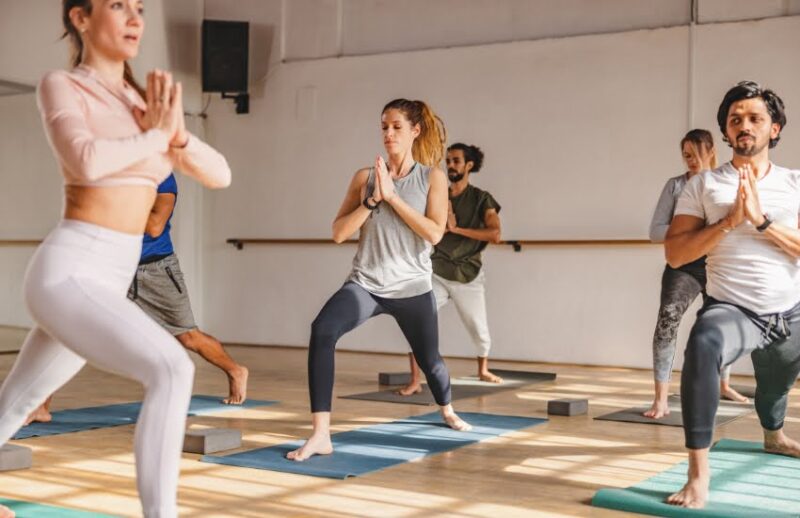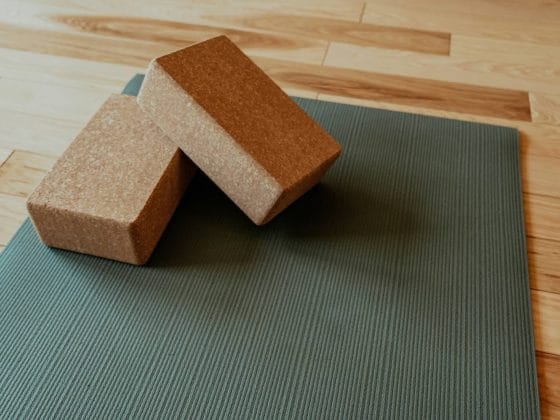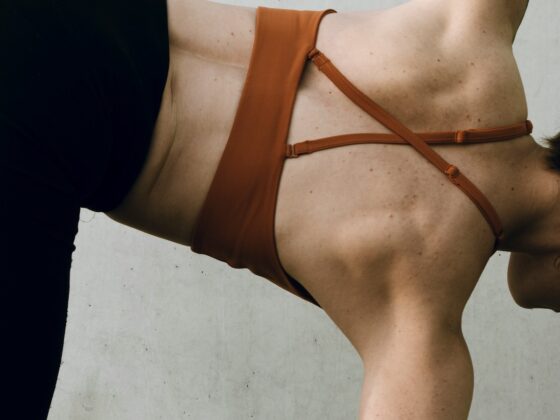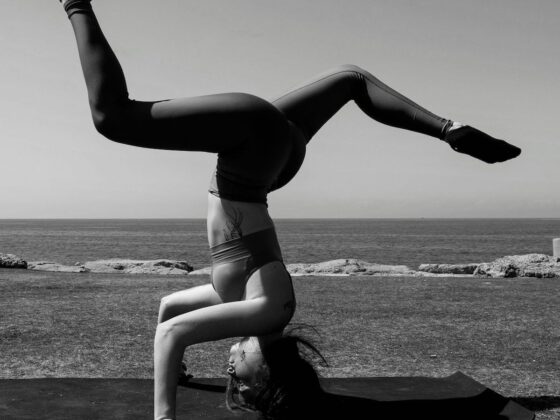After finishing my yoga teacher training, I was so excited to start creating my own yoga sequences! All YTT courses require you to put together sequences and teach it to the other yoga teachers in training.
In my mind, I was ready to teach anyone and believed I had everything it took to offer a perfect yoga class. I soon realised, however, that there was a BIG gap between the types of sequences my fellow yogis could do, compared to complete beginners. I quickly had to adjust my sequences so that it catered to everyone’s needs.
Over the years, I’ve gathered a few key strategies that allows me to effortlessly create beginner-friendly yoga classes, which I’ll share with you in this blog post.
How to Create a Beginner Yoga Sequence
Create a Solid Foundation
You’ll get many complete newbies in your yoga classes. So, it’s essential that you establish a solid foundation on which the class can build.
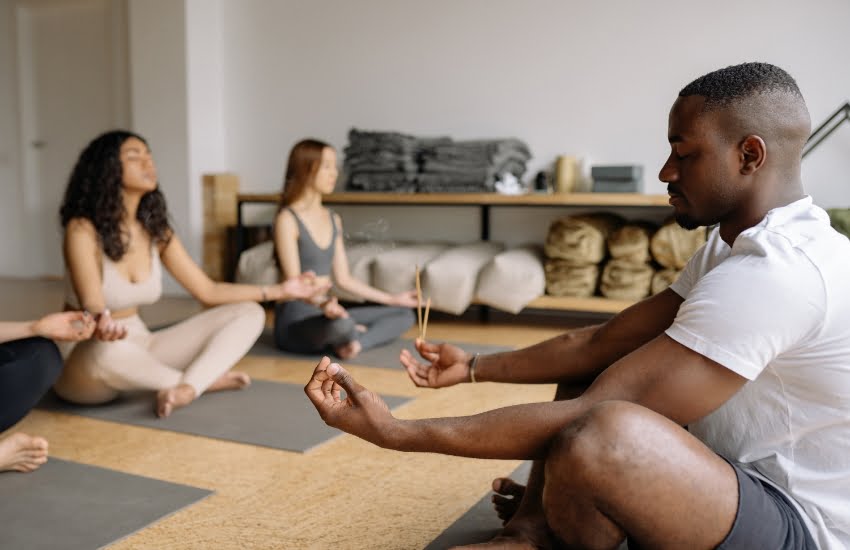
Ask Who is New to Yoga
When everyone is seated on their mats, it’s important to take note of who is in your class and what their experience level is.
Take a look at those who raise their hands in response to your question. Keep an eye on them during the class – making sure you give them the extra time and attention they require. This personal touch has made a big difference to my classes and has turned newbies into regular students.
Ask Who has Injuries
This is crucial no matter what level you’re teaching at. If there are people with injuries, you need to give them alternatives where necessary. Don’t skip this step!
I have seen way too many people get hurt in yoga classes because the teacher neglected to take note of personal injuries.
Introduce Yourself and the Goal of Your Class
Do a quick introduction where you share your name and explain what your class is all about. My classes typically centre around mobility and stability in order to strengthen small-fibre muscles that most of us neglect.
I’ll briefly explain this to my students, so that they know what to expect. Work on your own explanation, depending on what you teach.
Talk Through Your Practice
Take 1-2 minutes to talk through your practice. Briefly explain how you’ll begin the practice, what they can expect to experience and feel throughout the practice, and what they should take note of.
Make sure to mention that pain is never a good sign and they should only push themselves to a level of slight discomfort.
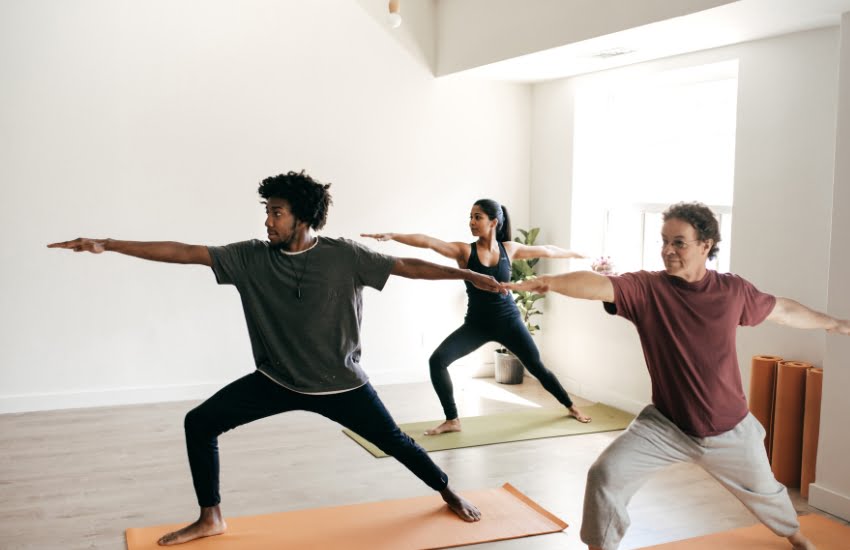
The Basics of a Yoga Sequence
Yoga is all about coming home to the body and developing body awareness. So, it’s essential to create a sequence that incorporates multiple different components that tap into the different sensory experiences.
1. Start with some Breathwork
Ask your students to sit or lie down and to close their eyes. Guide them as you bring their awareness to their breath. This is a wonderful way to centre everyone before the practice begins.
2. Allow Your Students to Set an Intention
After a few rounds of breath, ask your students to keep their eyes closed while they set an intention for their practice. Give them examples of intentions, such as feeling more relaxed, leaving behind the stress of the day, getting in a workout, or simply just trying something new.
3. Do Some Sun Salutations
As the basis of all yoga sequences, this is a quick and easy way to guide your students through a basis flow, while giving you an opportunity to assess their level and capabilities. I’d recommend doing 3 rounds of Sun Salutation A and 4 rounds of Sun Salutation B.
4. Child’s Pose
This is a quick “pause” that allows you to make some adjustments to the sequence you prepared for the class, if necessary. It also allows the newbies to catch their breath before you guide them through a more challenging sequence.
5. Follow a Sequential Pattern
I like to combine 5 different asanas to create a flow, and then repeat that flow 3 times. This usually takes about 10 minutes to complete. This way I know how many sequences to create in order to have a full practice.
You can choose any pattern that suits your needs – whether that’s 4 asanas, repeated as a flow 5 times, or 10 asanas, repeated as a flow 2 times. Experiment and see what feels good to you. Make sure that you stick to the same pattern, though, because it gives your students (and yourself) a solid foundation.

6. Make Savasana Your Final Pose
Make sure that your final pose is savasana, where you give your students 5-10 minutes to integrate all the juiciness of their practice. Here, you can guide them through a quick meditation or body-scan. Or you can go around and give a few of your students a light shoulder or head massage (I love doing this – I can always see how my students completely relax into their final pose).
7. End Off by Bringing Them Back to Their Intention
I love ending my classes the same way I began them. I typically take my students from savasana into a seated position, where I bring them back to the intention they set at the beginning of the class.
I ask them to thank themselves and to take a few deep breaths. After everybody opens their eyes, I make sure to check in on how everyone is feeling, without talking too much (most people are chilled AF after a yoga class and don’t want to talk – so, let them have their space).
Putting Together a Yoga Sequence
To create a yoga sequence, you need to choose multiple different types of poses and combine them into an easy flow.
Choose Your Poses
There are so many poses you can choose from. Make sure to include as much variety as possible. Choose from the following categories:
- Standing Poses: Like Mountain Pose, Warrior I and II, and Triangle Pose. Emphasize proper alignment, grounding, and stability in these poses.
- Balancing Poses: Like Tree Pose and Warrior III to enhance stability, focus, and body awareness. Offer modifications and the use of props to support beginners in finding their balance.
- Seated and Supine Poses: Like Forward Fold and Butterfly Pose, to stretch the hips and hamstrings. Include gentle supine poses like Bridge Pose or Reclining Bound Angle Pose to promote relaxation and release tension.
- Backbends and Heart Openers: Like Cobra Pose or Sphinx Pose, to gently open the chest and heart centre. Encourage beginners to listen to their bodies and modify as needed.
- Gentle Twists: Include seated or supine twists to improve spinal mobility, release tension, and stimulate digestion. Guide beginners to move with breath and practice gentle twists with proper alignment.
- Balances: Like Crow Pose or Head Stands. If you’re able to provide clear instructions, these are a great way to boost the confidence of beginners, since many balancing poses are quite easy to get into with the right guidance.
- Savasana (Corpse Pose): This one is quite easy to incorporate. Depending on the type of class you’re offering, you can include savasana multiple times throughout the class.
If you are looking for more ideas, here is a good place to build your own sequences.
Make the Sequence Easy to Follow
It’s really important to ensure that the poses you choose can logically follow after one-another. It doesn’t make sense to take your students from a downward-facing dog into a reverse tabletop – especially not beginners.
So, be mindful of the combinations you choose. This takes some time to get used to, but trust me, you’ll get the hang of it in no time!
Provide Clear Instructions
I cannot emphasise this enough. Practice how you communicate! You can practice literally anywhere. Make sure that your instructions are easy to understand – distinguish between left and right, a foot and a hand, up and down.
When you’re confusing your words, your students lose focus. Offer step-by-step instructions and cues to help them find proper alignment and engage in the poses effectively. Also, remember to tell your students to breathe. Beginners often focus so hard that their faces turn purple.
Encourage the Use of Props
Props like blocks, straps, and blankets are invaluable tools for beginners. Encourage their use to support proper alignment, increase accessibility, and prevent strain or injury.
Make sure that you make them understand that just because they’re using a prop does not make their practice less effective or valuable. You want everyone to feel like their accomplishing a difficult task.
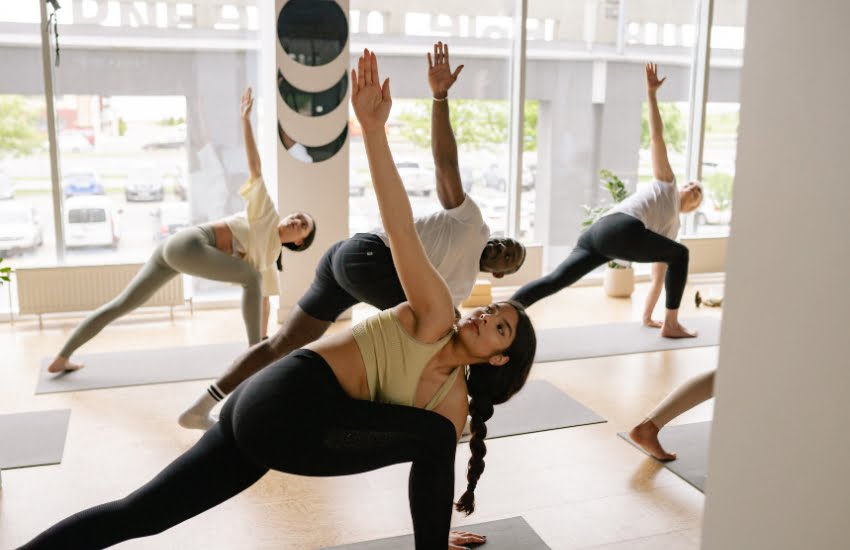
Offer Modifications and Progressions
This is invaluable to all your classes, since it allows you to cater for all levels. Start with beginner options and then add an intermediate and advanced option – making sure to emphasise that everyone should do what they’re comfortable with.
This is a great way for everyone to test out their skills and to see whether they can push themselves a bit further.
Emphasize Body Awareness and Breath
Continuously bring the students back to their breath and encourage them to check in with how their bodies are feeling. Even as a yoga teacher, I need to consistently bring my awareness and attention to my breath.
Make it clear that self-compassion is the name of the game and that the purpose of yoga is not to push yourself to your limit, but to meet yourself where you are at right now.
In Summary
If you’re struggling to create a beginner-friendly yoga sequence, simply think back to the time when you were a beginner. Why did you want to come back to that class? What grabbed your interest?
The simpler you make your classes, with adequate opportunity for all levels to push themselves beyond their comfort zone, the more likely you are to have students-on-repeat – and most importantly…raving fans!
